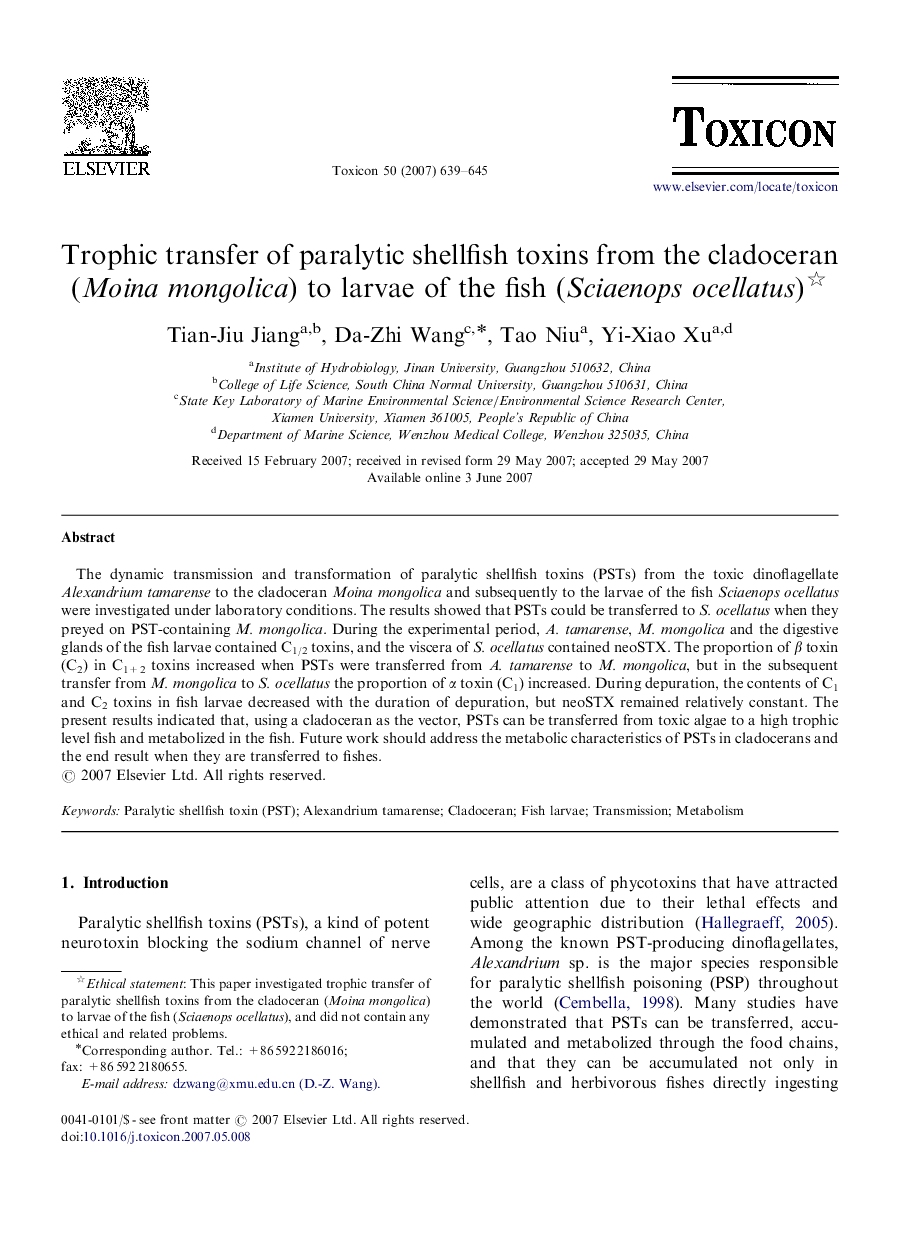| Article ID | Journal | Published Year | Pages | File Type |
|---|---|---|---|---|
| 2066801 | Toxicon | 2007 | 7 Pages |
Abstract
The dynamic transmission and transformation of paralytic shellfish toxins (PSTs) from the toxic dinoflagellate Alexandrium tamarense to the cladoceran Moina mongolica and subsequently to the larvae of the fish Sciaenops ocellatus were investigated under laboratory conditions. The results showed that PSTs could be transferred to S. ocellatus when they preyed on PST-containing M. mongolica. During the experimental period, A. tamarense, M. mongolica and the digestive glands of the fish larvae contained C1/2 toxins, and the viscera of S. ocellatus contained neoSTX. The proportion of β toxin (C2) in C1+2 toxins increased when PSTs were transferred from A. tamarense to M. mongolica, but in the subsequent transfer from M. mongolica to S. ocellatus the proportion of α toxin (C1) increased. During depuration, the contents of C1 and C2 toxins in fish larvae decreased with the duration of depuration, but neoSTX remained relatively constant. The present results indicated that, using a cladoceran as the vector, PSTs can be transferred from toxic algae to a high trophic level fish and metabolized in the fish. Future work should address the metabolic characteristics of PSTs in cladocerans and the end result when they are transferred to fishes.
Keywords
Related Topics
Life Sciences
Biochemistry, Genetics and Molecular Biology
Biochemistry, Genetics and Molecular Biology (General)
Authors
Tian-Jiu Jiang, Da-Zhi Wang, Tao Niu, Yi-Xiao Xu,
